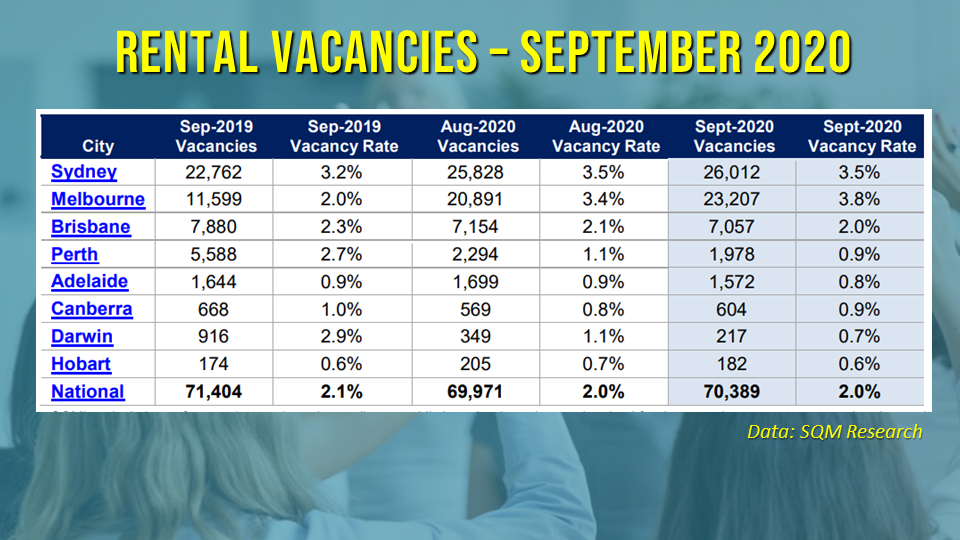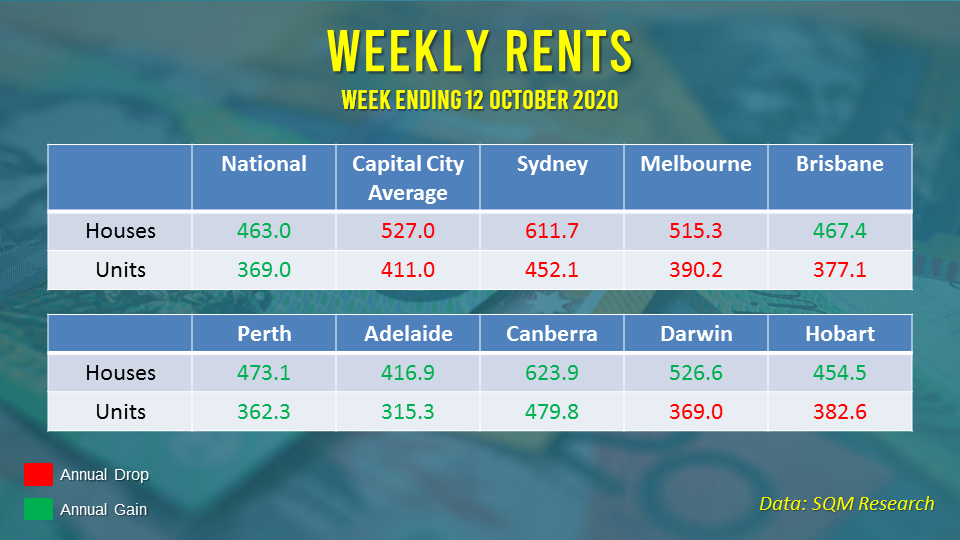Australia's vacancy rate remained stable in September except in Sydney and Melbourne, where elevated vacancy levels are already dragging rents down, according to the latest report from SQM Research.
National vacancy rates remained at 2% in September, as most capital cities report a decline in vacancy rate. Darwin recorded the steepest decline in vacancy levels from 1.1% to 0.7%.
The vacancy rates in Sydney and Melbourne, on the other hand, remained elevated at 3.5% and 3.8%, respectively. Melbourne hit the highest gain in vacancies, up from 3.4% to 3.8% due to the stage four restrictions. Canberra also reported a slight increase to 0.9%.

Elevated vacancies were more apparent in CBD regions, particularly in Melbourne CBD, which reached an all-time high rate of 10.8%. The vacancy rate in Sydney also remained high despite a slight drop to 12.8%.
"Elevated rental vacancy rates in Sydney and Melbourne continue to push city rents downwards. This is particularly the case in the CBD and inner ring suburbs close to the CBDs," said Louis Christoper, managing director at SQM Research.
In fact, Melbourne and Sydney continue to clock declines in asking rents for both houses and units. For the month ending 12 October, rents in Sydney decreased by 1.7% for houses and 1.2% for units. Melbourne hit a 0.8% drop in asking rents for both housing segments.

Christopher said vacancy rates in regional locations continue to trend down to below 1%.
"It really represents the point of little to no rental vacancy. In short, in September the population was still looking to stay away from the large cities. We think this trend may soon reverse, but to what extent remains a mystery," he said.